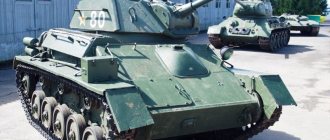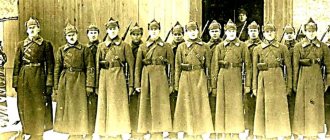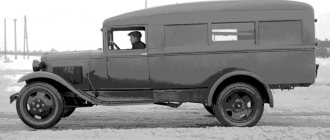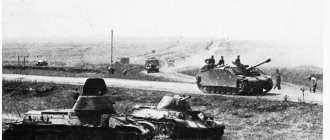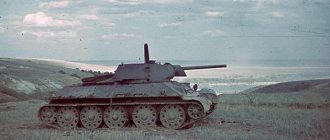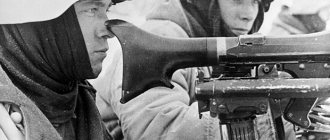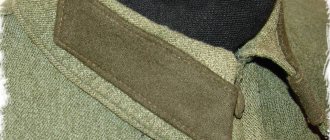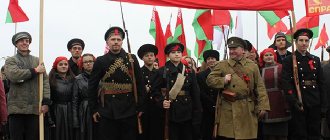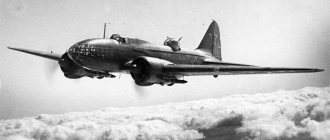Read: 1,830
The 14th Mechanized Corps, whose headquarters was located in Kobrin, also included a separate motorcycle regiment, which was supposed to conduct reconnaissance in the interests of the army. But this unit was located at a distance of 55 kilometers to the east from the corps headquarters and at a distance of almost 100 kilometers from other combat units. Such a dislocation was surprising, but simply closer to the border in the Brest region, overcrowded with troops, there was no free barracks stock and repair enterprises.
Motorcycle regiments were equipped with heavy weapons
Motorcycle regiment - shock reconnaissance unit
The town of Drogichin was ideal for housing a military unit. During the Polish Republic, it was the center of the povet, so several administrative buildings were built here, which made it possible to comfortably accommodate the headquarters of the 20th Motorcycle Regiment. In the mansions where Polish officials lived, the command staff and their families were comfortably accommodated. The barracks of the marching battalion of the Polish army received soldiers and sergeants, maybe not as comfortably as commanders, but there was a roof over their heads, glass in the windows and stoves. In addition, large repair shops for the repair of agricultural machinery, previously owned by a Warsaw company, were located in Drogichin. The technical park of the motorcycle regiment was located at their base.
Pre-war Drogichin
The twentieth motorcycle regiment of the Red Army itself, according to the idea of the Chief of the General Staff of the Red Army, Georgy Zhukov, was to become a powerful formation, performing the functions of in-depth reconnaissance and raid operations behind enemy lines. The equipment of the motorcycle regiment was intended to be appropriate: 17 medium cannon armored vehicles BA-10, 63 trucks, 6 - 45 mm anti-tank guns, more than 200 machine guns, dozens of mortars and flamethrowers. And the main striking force is 424 heavy motorcycles, of which 389 are motorcycles with sidecars. Such equipment for one and a half thousand soldiers and commanders made the 20th Motorcycle Regiment a mobile strike force, simply saturated with automatic fire. The first company of the 20th regiment even had PPD submachine guns, which were rare for the spring of 1941.
The regiment, formed on the basis of units of the mechanized brigade that entered Brest in September 1939, was commanded by Major Ivan Semenovich Plevako, an experienced cavalryman, a participant in the First World War, from the Terek Cossacks. During the Civil War, Ivan Semenovich, at the head of a reconnaissance squadron, took part in battles in Ukraine. In the 20s of the 20th century, he commanded a special cavalry squadron that cleared Altai from local partisans who did not go over to the side of Soviet power and for several years fought with the Basmachi in the deserts and mountains of Turkestan. In the Central Asian Military District, he was assistant commander of a cavalry division for reconnaissance until, at the beginning of 1941, he was appointed commander of the 20th separate motorcycle regiment.
Major Ivan Plevako, commander of the only motorcycle regiment of the army
Armored car and motorcycle parts
Armored car and motorcycle parts
On the eve of the war, the Red Army planned to use armored vehicles and motorcycle units to support reconnaissance activities of regular rifle and cavalry forces of the active fronts and armies.
Since Soviet industry was unable to create a sufficiently reliable armored vehicle before the start of the war, the main vehicle in most reconnaissance units was a motorcycle. However, after the outbreak of war, the NKO used existing armored vehicles to form several armored vehicle battalions. Based on these outdated models, as well as captured German vehicles, the Red Army was able to form one armored car battalion by January 1, 1942, five by July 1, 1942, and 20 by February 1, 1943. If the Red Army did not have enough armored cars on the eve of the war , then with motorcycles the situation was different. When Operation Barbarossa began, each of the 29 mechanized corps of the Red Army had its own motorcycle regiment. After the mechanized corps were disbanded in August 1941, 12 motorcycle regiments remained in the Headquarters Reserve. After this, the Red Army included seven motorcycle regiments on January 1, 1942, five on July 1, 1942, and one on January 1, 1943.
By the end of 1942, the motorcycle regiments of the Red Army consisted of three motorized rifle companies, a mortar company equipped with eighteen 50 mm mortars, an anti-tank battery with four 45 mm guns, an armored car company with four armored cars and small logistics service units with a total regiment strength of approximately 900 people. Each motorized rifle company consisted of three rifle and one machine gun platoons with a total strength of 180 people, armed with 54 machine guns, nine light and four medium machine guns.
In 1942, the NKO also formed separate motorcycle battalions, whose task was primarily to conduct reconnaissance and patrolling, communicate between mobile troops, and provide commandant service (traffic control). Each of these rather vulnerable battalions consisted of two or three rifle companies and an armored car company, with a total of 287 men.[411] Between March and September 1942, 19 such battalions were formed, but later most of them were assigned to tank and mechanized corps. The number of motorcycle battalions in the Red Army increased from one on January 1, 1942 to 16 on July 1, 1942 and February 1, 1943.
Finally, in May 1942, the NKO formed a motorcycle brigade - the only one transferred to the Western Front during the entire war. This brigade, which consisted of three motorcycle battalions and was something of an anomaly, was disbanded in February 1943.[412]
As in the case of aerosled battalions, high-intensity combat operations made the Red Army's small armored vehicle forces completely redundant. Although the Red Army still included 20 armored car units on February 1, 1943, by the end of the year this figure had dropped to just eight. The NKO distributed most of the armored vehicles from these disbanded units among its new tank and mechanized corps.
On the contrary, with the strengthening of tank armies, tank and mechanized corps, separate tank, motorized rifle and mechanized brigades and separate tank regiments in 1943, the NKO also continued to develop its motorcycle troops. For example, in March 1943, three new motorcycle regiments of the new organization began to form. These regiments consisted of a motorcycle battalion with three motorized rifle companies, an anti-tank battalion with two batteries of four 45 mm anti-tank guns and one battery of four 76 mm anti-tank guns, a tank company with 16 T-70 light tanks (later - 10 T-medium tanks -34), an engineer and armored personnel carrier company, equipped with MZA1 reconnaissance vehicles supplied under Lend-Lease.[413] The number of such motorcycle regiments in the Red Army increased from five on February 1, 1943 to eight on December 31.
The NKO also reorganized and strengthened its motorcycle battalions in the summer of 1943, adding a tank company of T-34 tanks to their staff and replacing one of the motorized rifle companies with an armored personnel carrier, while the battalion's strength increased to 451 people.[414] Despite these measures, after increasing the number of motorcycle battalions in the Red Army from 16 on 1 February 1943 to 19 on 1 July 1943, by 31 December 1943 it had plummeted to just four.
Unusual conscripts of the 20th Motorcycle Regiment
The regiment was formed from experienced fighters and commanders, many of whom had fought in Finland. With the material and technical base, everything was also not bad: there were cars, armored vehicles, small and heavy weapons, and Komsomolets tractors were received for towing 45-mm guns. The only thing missing was the main thing - motorcycles. More precisely, there were two dozen Soviet TIZ-AM-600 sidecars, but there was no one to teach how to ride these motorcycles. And the regiment commander was required to systematically train his soldiers. Ivan Semenovich was able to prove the need to call up residents of the Brest and Pinsk regions who have their own motorcycles for military service in the regiment.
The 20th Motorized Regiment received new armored vehicles
It is not known through whom this issue was resolved, but fifty young people appeared in the regiment, with the same number of iron horses. Don’t think that these were some intimidated and downtrodden guys. These were mostly young people from families of doctors, agronomists and other local intelligentsia who were not affected by the repression. Residents of the western regions did not know either aggressive collectivization or hunger for goods, so the attitude towards both the Soviet government and the Red Army on the part of Catholic Belarusians and Jews remained quite tolerant.
The first motorcycle races of the Red Army
In addition, it was much more convenient to serve with your own motorcycle, for which the financial part of the 14th Mechanized Corps officially paid compensation, and not to travel, like most conscripts from Western Belarus, to eastern Ukraine and the North Caucasus. Until September 1939, most of the new conscripts were members of youth motorcycle clubs at the sports societies "Rukh" and "Pogon" and participated in the annual motorcycle rally Brest-nad-Bug - Yanov-Polesskiy, held on May 3 in honor of the First Constitution of the Polish-Lithuanian Commonwealth. At that time, not far from Yanov-Polessky, a small racing track for motorcycles was equipped, which still exists today, albeit in a modified form. And so the new conscripts proposed holding races in honor of the already proletarian May Day.
Soldiers on motorcycles were supposed to conduct deep reconnaissance
To the surprise of Major Plevako, the idea found great support among the party authorities and in the political propaganda department of the 14th Mechanized Corps. In addition to the corps commander Sergei Oborin, the commander of the 4th Army Alexander Korobkov and the 1st secretary of the Brest OK KPB Mikhail Tupitsin were supposed to arrive at the first motorcycle races of the Red Army units. They decided to conduct the races on the most popular motorcycle available to conscripts: the English BSA Sleper. Before the motorcycle races there was to be a propaganda motorcycle rally, and after that a big concert by the Brest Philharmonic, which included artists who had conquered the stages of Warsaw, Bucharest and Prague several years ago. Read on to learn how these motorcycle races went and how it affected the situation in the first days of the war.....
What motorcycle armies did the Red Army have during the Great Patriotic War?
The period between the First and Second World Wars in military affairs was characterized, among other things, by the sweeping development of motorcycle and scooter (bicycle) units. They were usually created on the basis of cavalry units, whose functions they took over. Thus, in Belgium, cyclists and motorcyclists completely replaced cavalrymen; the Belgian cavalry divisions, although they retained their name, did not contain a single horse, but only bicycles, motorcycles and cars.
The Wehrmacht was no exception. Motorcycle battalions (Kradschützen-Batallone) were formed as part of all mobile formations (tank, light, motorized divisions and brigades) of the region. In terms of their composition, they were no different from ordinary motorized infantry, only they used motorcycles instead of trucks or armored personnel carriers. Motorcycle units also made up a fair portion of the reconnaissance battalions of the same formations.
The Wehrmacht's motorcycle battalions existed until the end of 1942, when they were all merged with reconnaissance battalions. They were preserved only in some SS divisions, some even had motorcycle regiments.
In the Red Army, for a long time there were no motorcycle or scooter units. The reason for this was the lack of mass production of both bicycles and motorcycles.
The first motorcycle shares in the Red Army appeared only in February 1940. At first these were separate motorcycle battalions, then they began to form motorcycle regiments as part of mechanized corps.
But the problem of industrial production was never solved, so it is not surprising that some regiments met the Great Patriotic War without motorcycles. For example, the 2nd motorcycle regiment of the 8th mechanized corps did not have motorcycles on July 1.
On June 7, 1941, the document “On the implementation of the resolution of the Council of People's Commissars of the USSR and the Central Committee of the All-Union Communist Party of Bolsheviks” “On the development of motorcycle production in the USSR” appeared. It was reported that “the plan for 5 months of 1941 of 3,850 motorcycles was fulfilled in the number of 2,936 units, or 76.0%.” And for the entire 1940, 2,509 motorcycles were produced. The industry could not cope even with this production plan.
This is despite the fact that the Wehrmacht armies on the Soviet border had 30,432 motorcycles, and in total at that time the German armed forces had more than 90,000 motorcycles.
More than once, the Red Army came to understand the purpose and structure of motorcycle units. “Manual for Motorcycle Troops” was published only in the summer of 1941, although development began back in 1940. At the same time, there were also such “important” instructions: “The actions of motorcycle units must be bold, proactive, cunning, misleading and create panic behind enemy lines.”
The original motorcycle regiments were relatively large in number (1,685 personnel), but poorly armed. The regiment, consisting of three battalions of three companies each, had only 27 50-mm mortars and 81 light machine guns.
For comparison, the German motorcycle battalion of 1941, numbering 850 people, consisted of five companies: three motorcycle companies, a machine gun and heavy weapons. The battalion had 54 light and 14 heavy machine guns, 9 anti-tank rifles, 27 50-mm and 6 81-mm mortars, 2 75-mm infantry and 3 37-mm anti-tank guns, 2 armored communications vehicles.
By the beginning of the war, the composition of the regiment had changed; instead of three battalions, only four companies remained. But since the composition of the motorcycle branch increased from 11 people to 16, the total number of personnel did not decrease much - it became 1,417 people. But the number of heavy weapons has increased: 16 heavy and 192 light machine guns, 17 medium armored vehicles, 6 45-mm guns, 24 50-mm mortars, 20 backpack flamethrowers.
The number of motorcycles decreased significantly. If in 1940 the regiment had 731 motorcycles (of which 704 were with sidecars), then in 1941 there were 389 motorcycles with sidecars and 45 without sidecars.
After the outbreak of the war, many motorcycle regiments were destroyed or disbanded, but later new battalions and regiments were created. Battalions should always be part of tank and mechanized corps, regiments should be part of armies. At the same time, the trend towards a decrease in the proportion of motorcycle units in motorcycle shares continued.
The formed separate motorcycle battalions initially consisted of three motorcycle and one armored car companies. However, by 1943, the composition of the battalion had changed and two motorcycle companies remained in it. But a tank company, a company of armored personnel carriers and an anti-tank destroyer battery (4 45-mm guns) were added. In total, the battalion had 450 people, 111 motorcycles, 10 tanks, 5 armored cars, 10 British Universal armored personnel carriers.
The battalion's motorcycle regiments were distinguished only by the fact that they had additional machine-gun and mortar companies, a battery of 76-mm guns and another anti-tank battery. Most often, the regiments had 57-mm self-propelled anti-tank guns instead of “forty-five”.
In total, the regiment consisted of 1,188 people, 214 motorcycles, 10 tanks, 13 wheeled American Scout armored personnel carriers, 4 half-tracked American M2 armored personnel carriers, 1 Universal armored personnel carrier, 3 BA-64 armored vehicles, 8 57-mm self-propelled anti-tank guns ( American T48), 4 76-mm cannons, 9 82-mm mortars.
Motorcycle regiments and battalions were not the only units of the Red Army whose staff included foreign models of equipment received under Lend-Lease. Most units were armed with British Valentine tanks, although there could also be T-70s and (sparsely) T-34s. In the machine gun company, heavy machine guns were installed on Willys and turned into mobile installations. Motorcycles, especially during the end of the war, were also usually Lend-Lease, most often American Harleys.
In general, the tendency to strengthen the motorcycle share with armored vehicles and heavy weapons is clearly visible, so much so that the very name “motorcycle” can be applied to them with great reservations.
We also recommend reading:
- How did Soviet motorcycle shares differ from German ones?
- Why in the Red Army during the Great...
- What did the NKVD do during the Great Patriotic War?
- Why were there so many skiers in the Red Army in...
- How the national units of the Red Army fought in...
- “Snow Cavalry”: how ski troops fought in...
